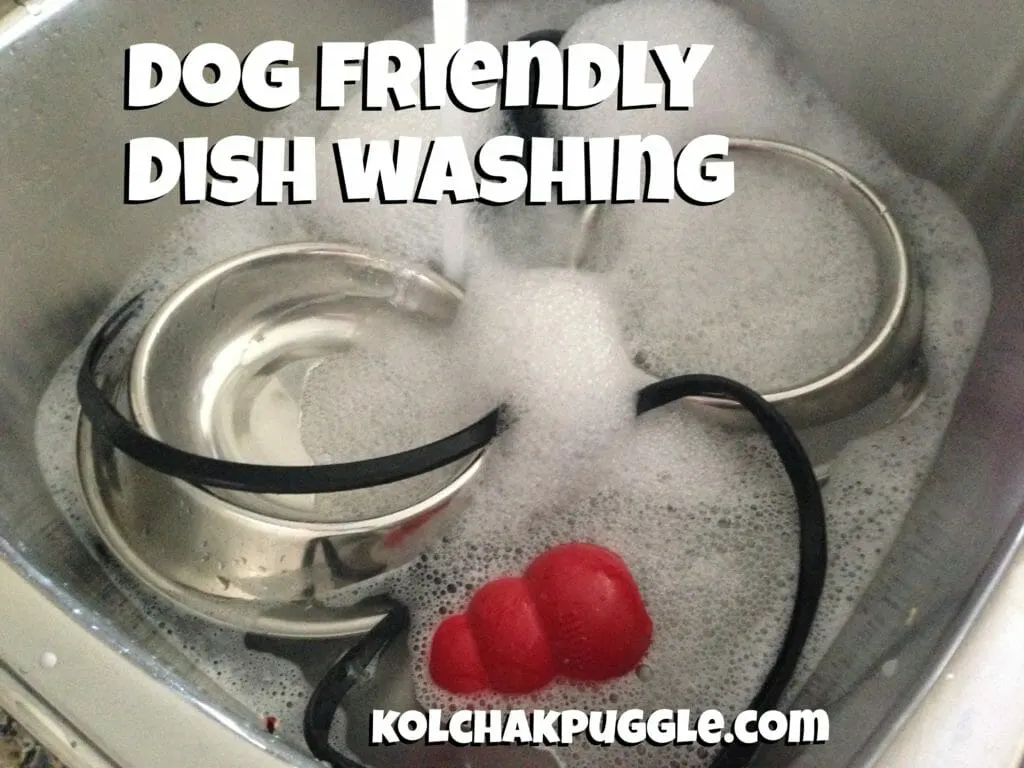As a member of the Etsy affiliate program and an Amazon Associate, I earn from qualifying purchases.
The say cleanliness is next to dogliness.
Or something like that. I could have that quote wrong. Here at Casa de Kolchak, we really love to have a fresh clean house that doesn’t look like a pack of wild canines live inside. Just because we want the house clean, doesn’t mean we’re willing to compromise on safety though. A few years ago, I never would have thought something as important as dish washing could be bad?!
Felix changed all that.
I swear, if that boy was a car, he’d be a lemon. I love his fluffy butt to death, but he’s allergic to everything. The slightest interference from household chemicals left him itchy and covered in hot spots. Sure, he’s an extreme example, but in my quest to find products that would work for him, I happened to learn a thing or two about dish soap that left me wanting a more natural approach for our whole family.
Turns out, for a product designed to make things cleaner, there’s a whole lot of junk is dish soap.
Forget the nasty dyes they use to make it pretty, there are additives in dish soap that are linked to heart disease and heart failure. Others are known carcinogens and endocrine disruptors. Other ingredients can irritate the skin and eyes and aren’t meant for consumption. One particularly worrisome chemical in antibacterial dish soap can mix with chlorinated water to make chloroform. What the woof is all that doing in soap? Still, dishes need to get clean.
Here’s what we do to make sure our dishes are sparkling clean without all the chemicals:
- Wash dishes with liquid Castile Soap and vinegar. Castile soap is a natural product made with vegetable oils. When used with regular white vinegar, it can leave your dishes sparkling and naturally clean. Wash dishes in a sink full of hot water with the liquid castile soap, then rinse in a vinegar & water bath. (Want that lemon fresh smell? Add a few drops of lemon oil into the wash water.)
- Disinfect gross surfaces with 3% Hydrogen peroxide and white vinegar. We’re raw feeders, so making sure our dog dishes are clean and disinfected is very important to us. Hydrogen Peroxide and vinegar gets the job done. Simply fill two spray bottles, one with each liquid, then spray surfaces with one, then the other. In tests run at Virginia Polytechnic Institute and State University, pairing the two mists killed virtually all Salmonella, Shigella, and E. coli bacteria on heavily contaminated food and surfaces when used in this fashion, making this spray combination more effective at killing these potentially lethal bacteria than chlorine bleach or any commercially available kitchen cleaner.
- Scrub stubborn food mess with baking soda. Sure, you can buy all sorts of natural scrub sponges made from corn husk or coconut fiber, but to be honest? Sponges gross me out. I imagine them like crack dens of gross bacteria. That’s why I use plain baking soda to scrub stubborn food mess off my pots and pans. For stubborn roast on foods, I’ll liberally sprinkle the pan with baking soda, then cover with vinegar and water. Works like a charm.
- Dishwasher obsessed? We use ours mostly to heat treat our dishes on the “disinfect” cycle, but if you’re a dishwasher fiend, try this dishwasher soap recipe. A friend swear by it.
At the end of the day, I want clean dishes that are safe for me and more importantly, safe for the dogs. It might be a little more work, but I think they’re worth it.



Jessica
Tuesday 10th of September 2024
Thank you for the information. It's crazy how difficult it is to find information on safe products to use for pets. Should the hydrogen peroxide be food grade since I'll be spraying it on my dogs bowls? And I'm assuming after you spray them you rinse them with hot water again?
Jodi | the DIY pet
Sunday 29th of December 2024
Yes! I use food grade hydrogen peroxide and always rinse them well!
Anyone Got a Bubble? - Doberman Forum : Doberman Breed Dog Forums
Tuesday 1st of April 2014
[…] little blog, done by a lady whose dog is allergic to like everything, about what she cleans with. Dog Friendly Dish Washing | Kol's NotesKol's Notes __________________ ~Doberman Rescue Minnesota~ ~Dog Food Advisor - Food research […]
Emma
Saturday 10th of August 2013
Mom is dishwasher obsessed because washing by hand ruins her nail polish...please! Our bowls are stainless the rubber died ages ago so they go in the dishwasher. We might just try that soap recipe, why not? Thanks for sharing!
KolchakPuggle
Saturday 10th of August 2013
LOL, Mama feels the same way. She repaints CONSTANTLY. It seems so...pointless?
Pup Fan
Sunday 4th of August 2013
Thanks for these tips!
14 | Pearltrees
Saturday 3rd of August 2013
[...] Dog Friendly Dish Washing | Kol's Notes [...]